“It’s an amazing ship,” says a man in the white delivery van pointing at the Chikyu. The Japanese vessel lying at anchor in the port of Shimizu looks very different from the bulky container ships moored to the dock around her.
Half of the Chikyu (“Earth”) resembles an oil drilling ship with a rig floor and a helicopter landing pad. The other half of the vessel is an impressive scientific laboratory.
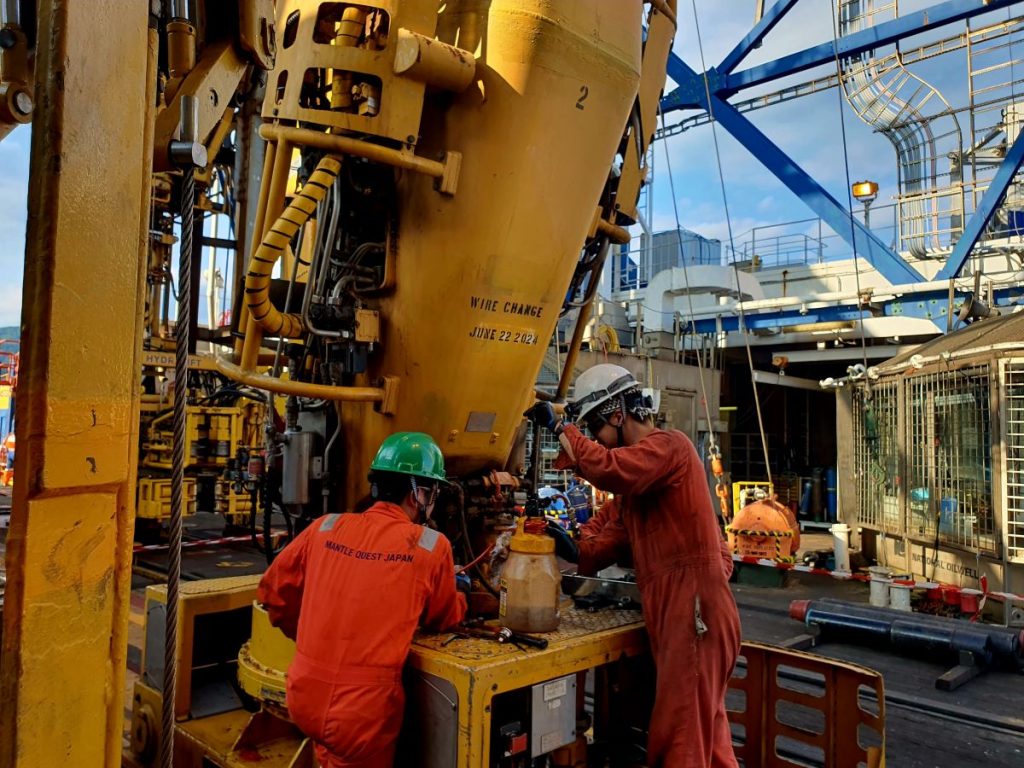
A Crucial Mission
Inside, geologist Patrick Fulton from Cornell University is busy doing final preparations before the ship sets sail. The American scientist is excited to return to the Japan Trench. The Japan Trench, where the North American Plate and the Pacific Plate meet, is known for frequent earthquake activity.
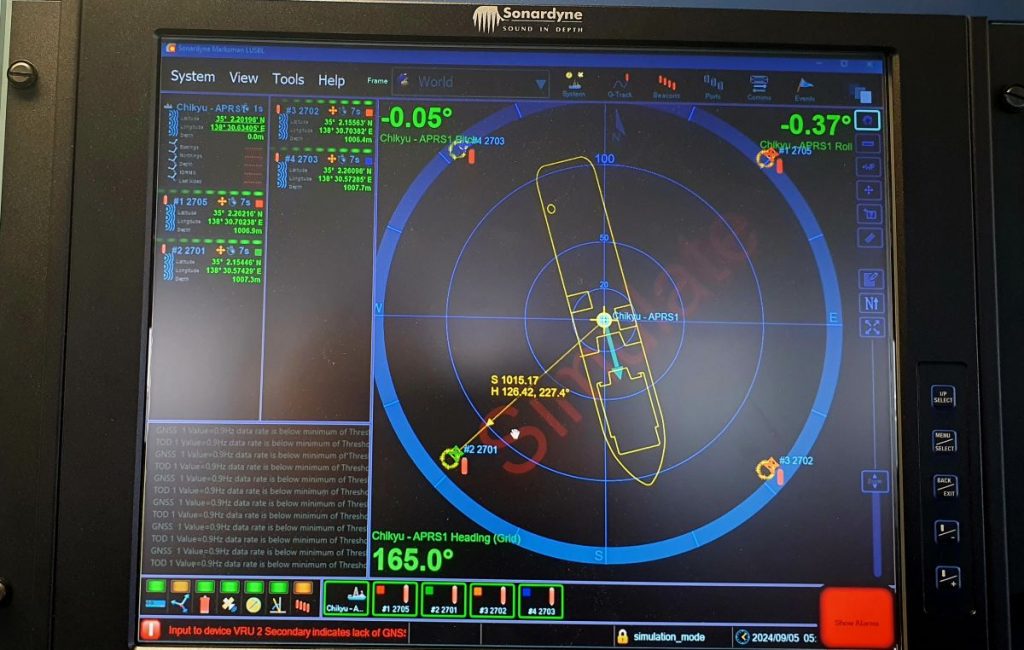
The Chikyu is on its way to 37°56.3340’N, 143°54.8100’E. It needs to be precisely at this position, down to the last digit, with no margin for error. For the layperson, this translates to roughly 140 nautical miles or 260 kilometers off the coast of Sendai in Japan.
The mission is to drill 7,000 meters (about 23,000 feet) deep into the ocean floor to take samples of the earth’s mantle. The goal of the mission is to solve the mystery of the magnitude 9 earthquake in Tohoku that occurred in March 2011. The earthquake claimed the lives of more than 22,000 people.
To achieve this, the Chikyu team will drill into the tectonic plates taking samples and measurements to analyze tension and energy inside the earth.
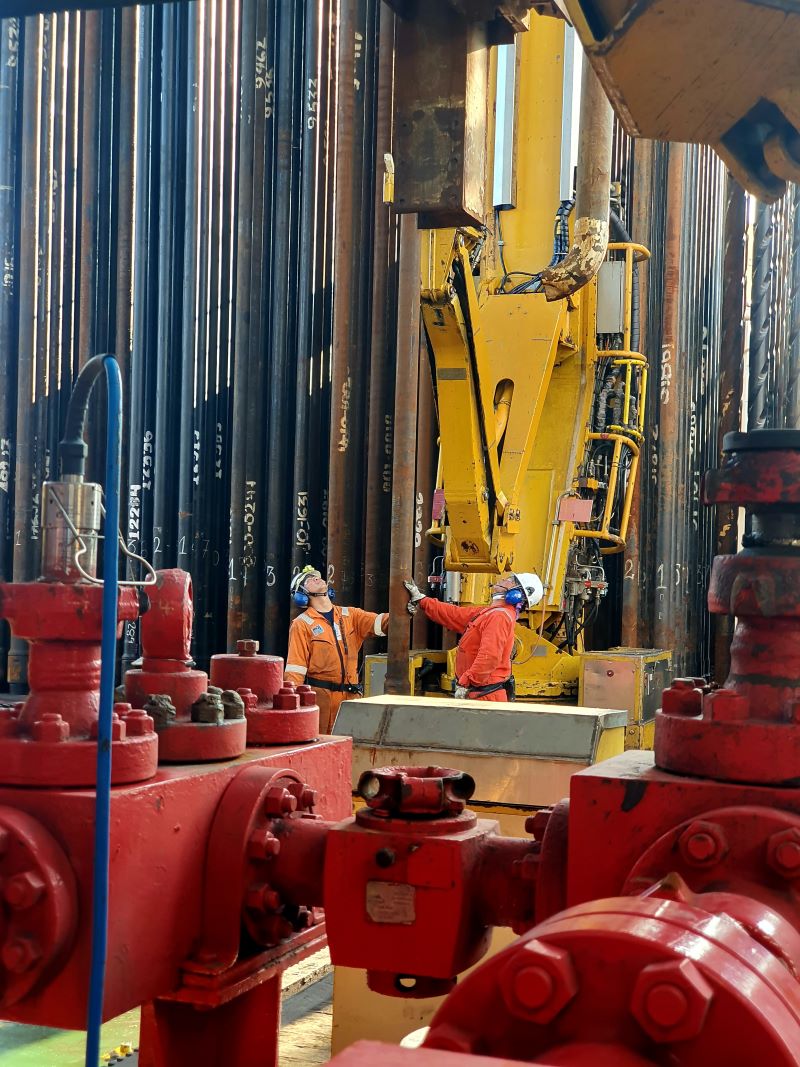
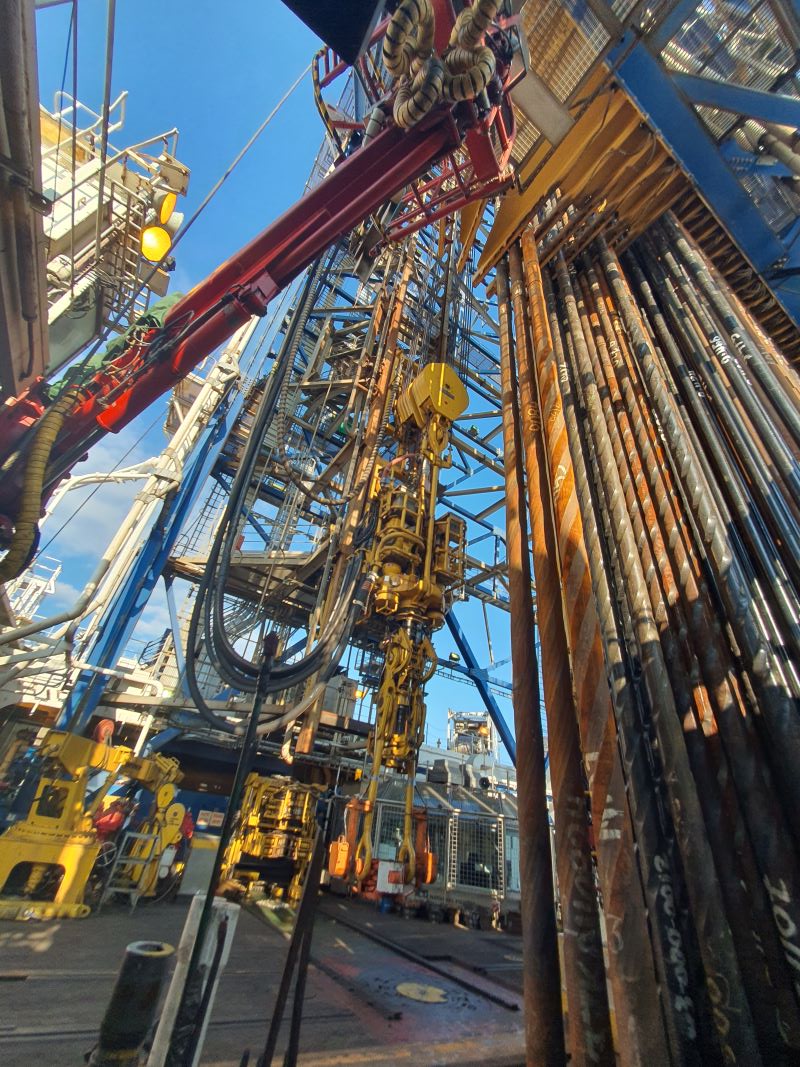
Typhoon Worries
For this mission, the 210-meter-long vessel needs to stay absolutely still come what may. “Typhoons are my biggest concern,” says Captain Takumi Maekawa. The big typhoons, he modestly clarifies. The Chikyu can deal with minor typhoons. It is fitted with six thrusters to keep its position regardless of wind, waves, and sea currents. This is altogether not a small feat.
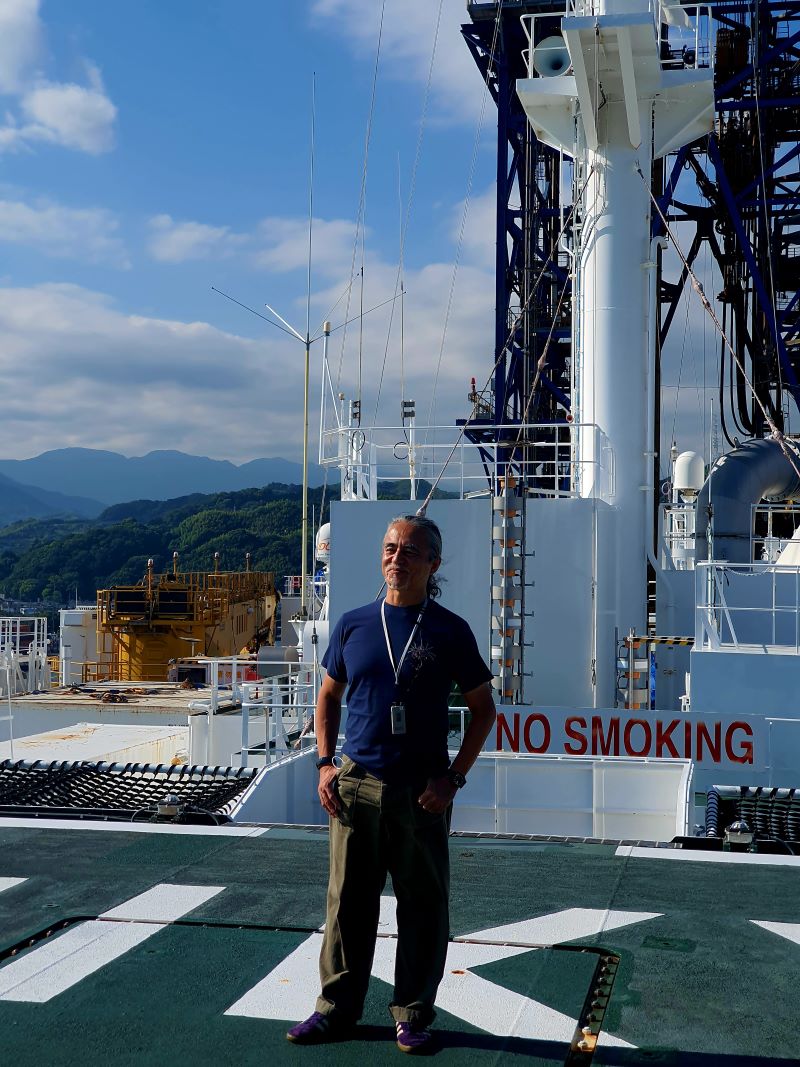

The crew will drill in exactly the location where it took samples more than a decade earlier. The captain tries to illustrate the mission to scientific simpletons like me by converting it to a scale of 1 to 100.
“Imagine you have a model ship that is two meters long, you put it on top of an 18-floor building. You have a wire measuring 70 meters. It’s like trying to hit a four-millimeter hole in the ground with the wire’s one-millimeter tip,” he explains. The 47-year-old pauses, then adds matter-of-factly: “It is quite amazing.”
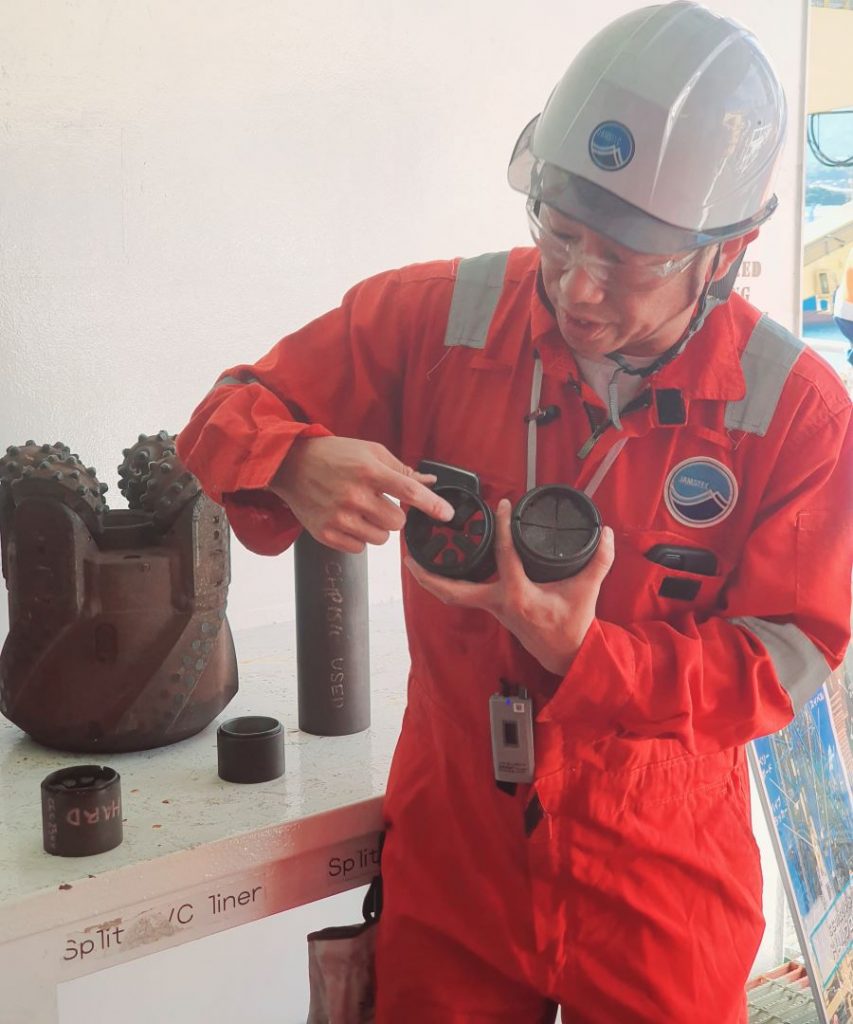
Analyzing the Stress State of the Earth
Samples taken a year after the 2011 earthquake have given scientists a better understanding of why it was such a powerful event. It was the largest recorded quake in Japanese history. “But questions remain,” says Takehiro Hirose from the Kochi Institute for Core Sample Research in Kochi prefecture.
Specifically, Hirose and his team want to find out the current stress state at the Japan Trench. The trench sits on the boundary between the Pacific Plate and the North American Plate. These plates are moving, converging at around eight to ten centimeters per year.
Hirose’s research institute is only one of three institutions worldwide that collects and archives such core samples. The two others are in Texas, United States and Bremen, Germany.
Geotechnologist Matt Ikari from the University of Bremen, who is currently on the Chikyu, already took part in previous expeditions on the ship. He praises the atmosphere and the food on board. “People are enthusiastic, especially the younger scientists,” he says. “On the other hand it can be quite tiring being on board,” he admits.
Chikyu’s Unique Role
While Ikari, Hirose, Fulton, and around 60 other scientists on the Chikyu are concentrating on their research, Nobu Eguchi is overseeing the operation of the ship. He is an old hand on board. With his hair tied back in a ponytail and one single silver earring in his left earlobe, he has a certain pirate aesthetic going.
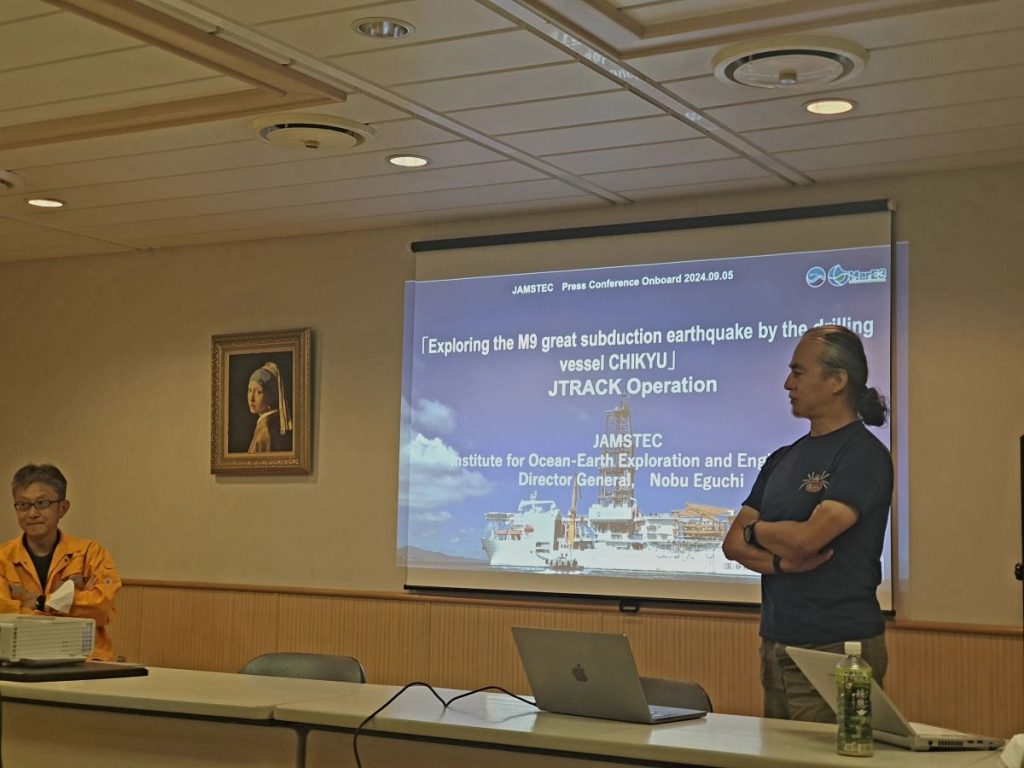
As director of operations at the Institute for Ocean-Earth Exploration and Engineering (MarE3), Eguchi also led earlier expeditions. The Chikyu, he explains, is only one of two vessels in the world with the capacity for such a mission.
Eguchi remarks, “Soon, she will be the only one.” In fact, the other existing scientific drilling vessel, the American ship JOIDES Resolution, is currently moored in the port of Amsterdam, Holland, where it is waiting to be retired.
In a couple of weeks, the 46-year-old ship will be on the way to the scrap yard. It is unclear when or even if the United States will be building a replacement. All national and international scientific ocean drilling expeditions are now relying on the Chikyu.
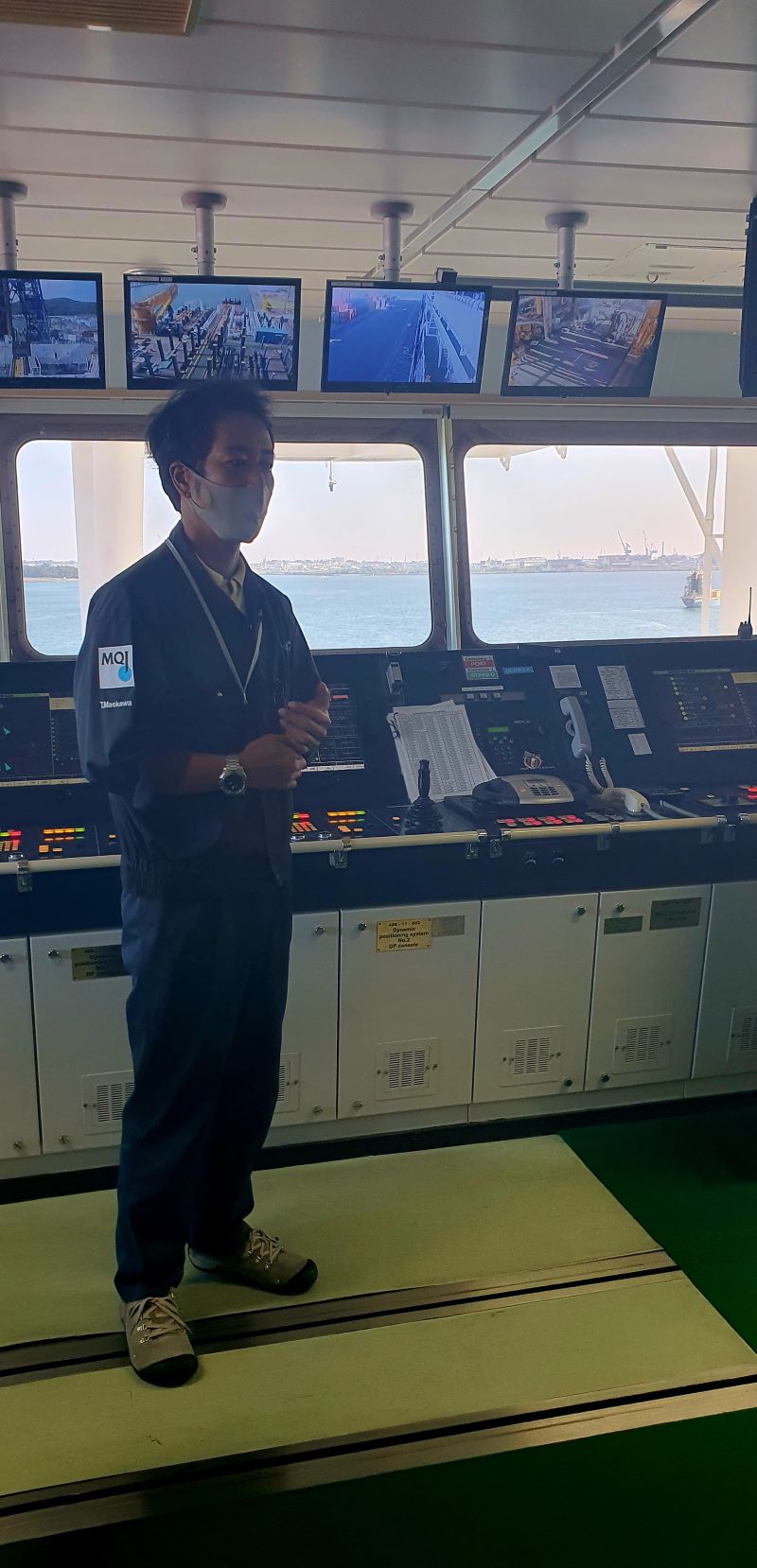
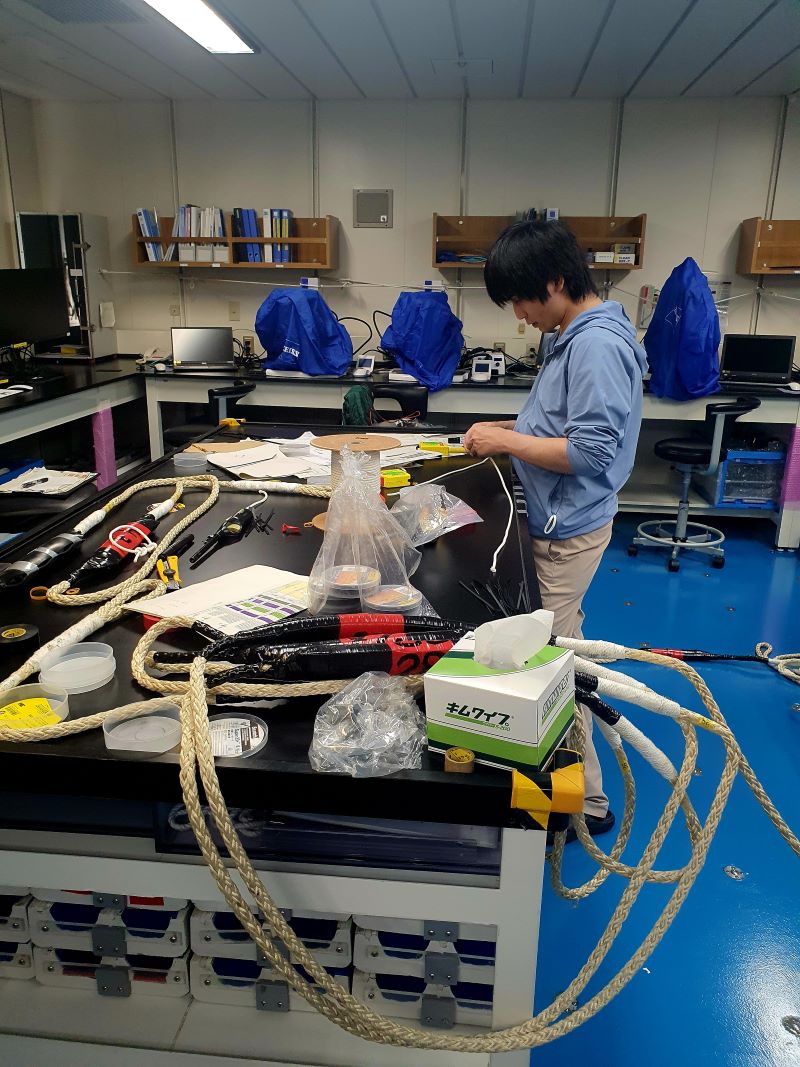
Chinese Ambitions
However, the Japanese vessel might not be the only scientific drilling ship in the world for too long. In January, China’s first homemade ocean drillship completed its trial voyage. The construction of the Mengxiang (“Dream”) started in 2021. Still, little is known about the vessel.
“There is not much information for the public,” says Eguchi. “It can drill down to 11,000 meters, the same as the Chikyu.”
The first ever scientific ocean drilling expedition had a famous passenger on board, explains Eguchi. The passenger was not a scientist, but the American writer John Steinbeck, who sailed on the Mohole in 1961 off the coast of Mexico. But the deepest the drilling reached was 183 meters and it failed to reach its aim, the core boundary.
Despite the setback, Steinbeck was impressed and wanted to return for another expedition. “I hope I may be invited back when the new ship sails towards new wonders in about two years,” the author wrote. That new ship never sailed and nor did Steinbeck. Eguchi is certainly luckier.
RELATED:
Author: Agnes Tandler

إرسال تعليق